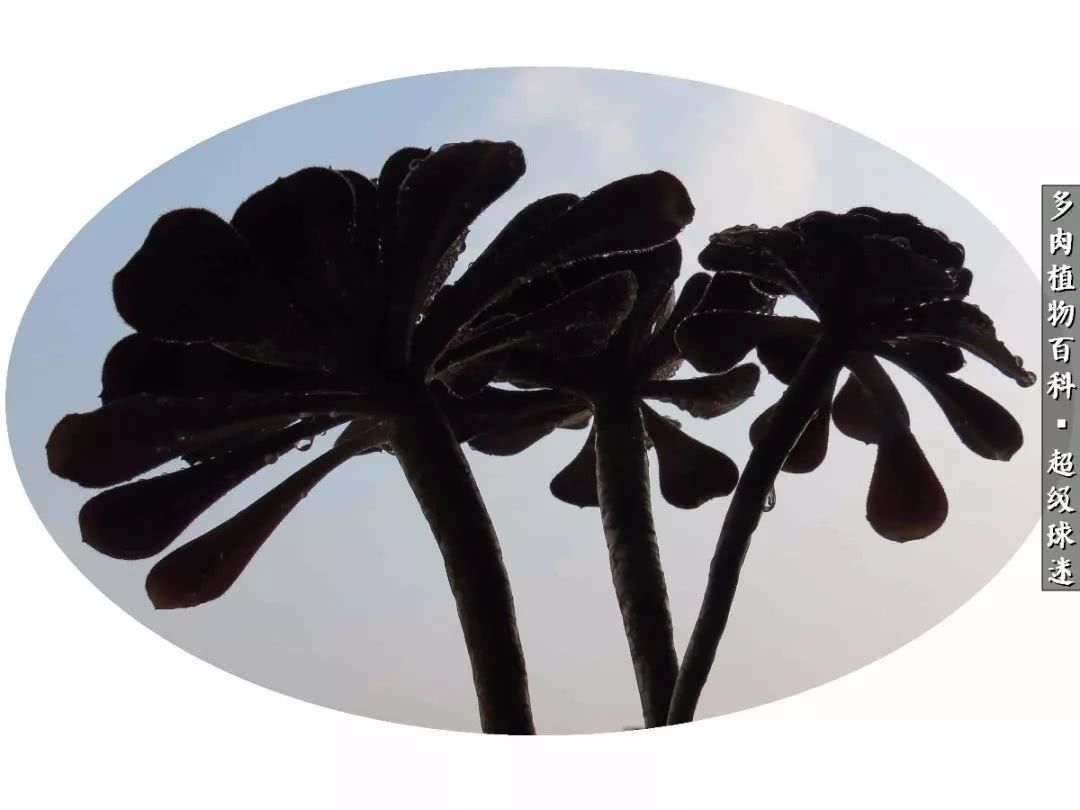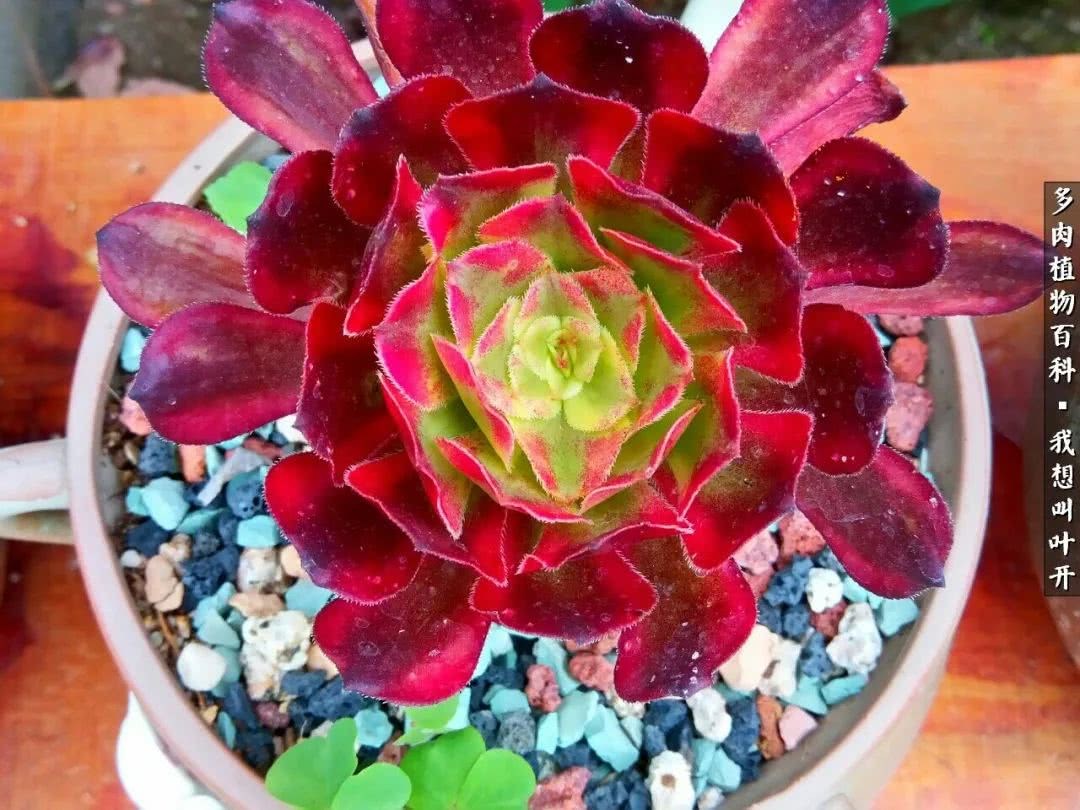I am not the god of medicine, but I also talk about the harm, resistance and pollution of succulent drugs.

Preface
Follow encyclopedia to meet beauty (WeChat account: duoroubaike)
The text begins:
Thanks to the author [super fans] for their original contribution and sharing.
Submission date: 2018-06-28
Editor: encyclopedia
Coordinates: Weifang City, Shandong Province
After my work "Rapid Pest Control by saturated spraying of High concentration Pesticide" was published in the encyclopedia of succulent plants, there was a heated discussion among the majority of meat lovers, including doubt, affirmation and confusion. In this platform, the impression of Liu Guofeng is not shallower than that of the encyclopedia, and he has been friends with me for a long time. But after all, human knowledge cannot be all-inclusive. The following in-depth analysis of some viewpoints in the messages of Mr. Liu and others is aimed at exploring the truth and popularizing knowledge.
Netizen "Liu Guofeng" left a message: "overdose drugs can not only burn succulent plants and leave sequelae, but also make succulent succulent plants develop drug resistance. We really need to pay attention to it!"
My analysis is:
First, the harm of pesticides to plants is not plant poisoning, but physical (stomatal blockage) and chemical (corrosion) damage. Pesticides and their solvents and excipients are all organic matter, and they form suspensions (usually not solutions) in water after adding water. After the pesticide is sprayed on the surface of the plant, due to the dilution of water, whether it is pH or osmotic pressure, it is relatively moderate and will not cause damage to the plant. When the water gradually evaporates, the concentration of organic matter gradually increases and finally attaches to the surface of the plant. It will cause harm to the plant, that is, the so-called drug damage. However, the water has not completely evaporated in three or five minutes, even if it has evaporated, because the time is too short, and then rinse with clean water, so it will not cause damage to the plants. On the other hand, pests are poisoned by pesticides. The more pesticides pests are exposed to, the faster and deeper the poisoning will be, and the pests will die quickly. "high concentration" plus "saturation spraying" is the key to rapid pest control.
Second, "succulent plants produce drug resistance" is something we miss to pursue, because if succulent plants are resistant, we can take drugs without worrying about drug damage. But I believe what Mr. Liu means is that pests produce drug resistance, not "succulent plants produce drug resistance".
What is the mechanism by which pests develop drug resistance? There are two factors.
1. For example, no matter how severe an infectious disease is, although it can kill most individuals of a species, it will never make the species extinct. For example, in a large enough chicken farm, although a large number of people die after the occurrence of serious bird flu, some of them will survive tenaciously. It turns out that some individuals of any species always have natural resistance. The same is true of pests, some individuals are born with drug resistance.
However, the drug resistance of pests is different from that of organisms against infectious diseases, that is, as long as the drug dose reaches a certain level, all pests will alas, and no individual will survive. However, if the dosage is not enough or the spraying is not in place, most pests may die, and some drug-resistant pests will only become seriously ill and eventually turn the corner. These narrowly escaped pests, in their offspring, the proportion of drug-resistant individuals will greatly increase, repeated several times, there are more and more drug-resistant individuals in the population, and then the use of low or even recommended concentrations of pesticides will no longer have the desired effect. However, this kind of drug resistance is unstable and reversible. If the drug is not used for a long time, the pest population will return to the original sensitive state.
2. After medication, among the pests that narrowly escaped death, some individuals had gene mutations due to the stimulation of pesticides, resulting in drug resistance genes. Once the drug resistance gene is produced, the gene will be stably passed on, making their offspring become pests with drug resistance genes. Although this situation is rare, once it is formed, it will be steadily inherited from generation to generation, spread and spread, and the use of the same pesticide will only get half the result with twice the effort.
What can be done to prevent pests from becoming resistant? That is to completely eliminate the pests, only the dead insects will not develop drug resistance. Some people advocate that when the drug kills insects, the concentration of the drug should be lower, which is completely wrong. Low concentration pesticides will only temporarily control the number of pests, not only can not completely eliminate pests, but also a hotbed for cultivating drug-resistant pests, and repeated use of drugs will increase the total amount of drugs.
In order to completely eliminate pests, it is necessary to increase the dose of pesticides (high concentration is not suitable in farmland, gardens and other large places, this method is suitable for small area pest control, most suitable for balcony party), but increasing pesticide dose will cause drug damage to plants. This forms a contradiction. In order to solve this contradiction, the author's "rapid pest control method of saturated spraying of high concentration pesticides" is a summary of the author's experience for many years and is worth a try.
Netizen "PP" message: pesticides directly into the sewers, is likely to cause environmental pollution.
My analysis is:
"pesticides rushing into the sewers will also cause environmental pollution." this is an indisputable truth, but it is also a meaningless nonsense. Everyone knows that all pesticides will cause pollution. But pesticides are still widely used and factories are producing them in large quantities because the harm caused by pests to human beings is more important than pollution. Under the current situation, if modern agriculture leaves pesticides, it will cause a shortage of food, vegetables, meat and so on, which is by no means alarmist. No one wants to go back to the primitive society of slash-and-burn cultivation. Thousands of people died in car accidents, and car exhaust is an important source of air pollution, but no one suggested stopping the production of cars; building aircraft carriers and missiles cost a lot of wealth. Without the covetous eyes of the enemy, who is not willing to use it to improve people's living standards?
Therefore, when we look at the problem, we should divide it into two parts and distinguish between primary and secondary. It is not that pesticides can not be used, it is our goal to make pesticides play the greatest role and minimize their harm. Now the pesticide residue period is about a week, let it decompose and fail in the sewer, by the time it enters nature, it is basically harmless and less harmful than staying on the ground. Although pesticide pollution is not to be underestimated, the number of pesticides used by our balcony party is only a trace compared with the total amount, which can be ignored.
Netizen "Bao Dad" left a message: drug pests are more fierce than insect pests, but the visual effects of insect pests look a little scary.
Most people will treat the harm of pesticides scientifically, and some people say they don't care, but some people talk about drug discoloration.
The poisoning accidents caused by the abuse of pesticides for the benefit of some lawbreakers and the misleading of some irresponsible media, ignoring the facts, have made some people have a wrong understanding. This kind of person is cautious in life, afraid of pesticides such as tigers, over time, form a kind of paranoid psychology, and some even develop into mental illness.
It is true that in the past, some pesticides were highly toxic and had a long residual period, which had a long-term impact on the ecology (such as organochlorines), but these kinds of pesticides have been gradually phased out. Now the pesticides approved by the state are safe as long as they are standardized. Pesticide pollution can not be ignored, but most of the pollution comes from abuse. Therefore, if we want to treat pesticides correctly, there is no need to talk about changes in color.
Because there are pests, we use pesticides, which are standardized and reasonable. A soldier is an unlucky weapon, and a gentleman has no choice but to use it.
The succulent plants raised by the author have been free of pests for more than a year, so they have not used pesticides for a long time. Some friends have some doubts about the author's "high concentration". Now take a few succulent plants to do an experiment. This experiment only verifies its security.
Experimental materials:
Pesticide: high chloroma, containing organophosphorus malathion and cypermethrin, the recommended concentration is 1500 Mel 2000 times.
Container: spray can, plastic bucket, plastic basin, syringe.
Succulent: White Peony, obscure Moon, Allen, Silver Star, Zi holding White Lotus.
1000ml the spray pot with water.
Suction of pesticide 5ml by syringe
Pesticides are added to water and mixed in plastic buckets. The ratio is 200 times, and the concentration is 10 times the recommended concentration of 7.5 Murray.
Put the succulent plant into the liquid medicine and time it.
Put the right amount of water in the plastic basin.
After 5 minutes, remove the succulent meat and put it into a plastic basin, wash it and fish it out.
The picture at that time.
The next day, there was no damage.
A week later, the picture was intact.
Conclusion: organophosphorus pesticide is one of the varieties which are easy to cause drug damage. It is proved by this experiment that the method of rapid pest control by saturated spraying of high concentration pesticide is safe.
Encyclopedia: I would like to thank the author for his "serious" spirit. I hope that more people, like the author, can personally conduct some experiments after seeing the experience shared by others, regardless of whether their views are right or wrong. There is a saying in the circle: "there is no great god in Jingtian". The experience methods of others are the most accurate and suitable for you only after they have been verified by themselves. Finally, coincidentally, the recent movie "I am not the God of Medicine" is quite popular. As soon as I read this article, I changed the title, which is also a hot spot.
This article has been exclusively authorized by the author Wechat official account: succulent Plant Encyclopedia (ID:duoroubaike), the content of the article does not represent the official account's point of view and position! Encyclopedia has signed a contract with a third-party Internet copyright protection company to open a network-wide protection of rights, unauthorized reprinting of other platforms is strictly prohibited! If the theft is found, the tort will be held responsible! Netizens are welcome to report!
Appreciate this article
At present, the official account appreciation function has been adjusted, with the author Wechat appreciation code instead of system appreciation, if you want to appreciate the author, please directly identify the Wechat appreciation code, praise to the author of this article!
Advertising ADVERTISEMENT
Succulent culture needs you and me to promote it! Remember to share more articles to make more people fall in love with succulent plants! Use the power of plants to influence and heal the people around us!
- Prev

Succulent plants have flowerpots all year round, but they can be beautiful forever.
Preface follow Encyclopedia meet beautiful (WeChat: duoroubaike) text begins: thank the author [Mengmeng Mengjiao] for original contribution sharing contribution date: 2018.06.26 Editor: encyclopedia coordinates: Sichuan Chengdu conditions have.
- Next

Raising wizards is a slow art, but they are bound to be stunning.
The preface follows the encyclopedia meets the beautiful (WeChat account: duoroubaike) text begins: thank the author [I want to call Ye Kai] for the original contribution sharing editing: encyclopedia coordinates: Zhejiang Qingyuan thank you very much for your hard work.
Related
- Wuhan Hospital Iron Tree Blooming Result Was Instantly Frightened by the Gardener Master
- Which variety of camellia is the most fragrant and best? Which one do you like best?
- What is the small blue coat, the breeding methods and matters needing attention of the succulent plant
- Dormancy time and maintenance management of succulent plants during dormancy
- Minas succulent how to raise, Minas succulent plant pictures
- What are the varieties of winter succulent plants
- How to raise succulent plants in twelve rolls? let's take a look at some experience of breeding twelve rolls.
- Attention should be paid to water control for succulent plants during dormant period (winter and summer)
- Watering experience of twelve rolls of succulent plants
- Techniques for fertilizing succulent plants. An article will let you know how to fertilize succulent plants.

